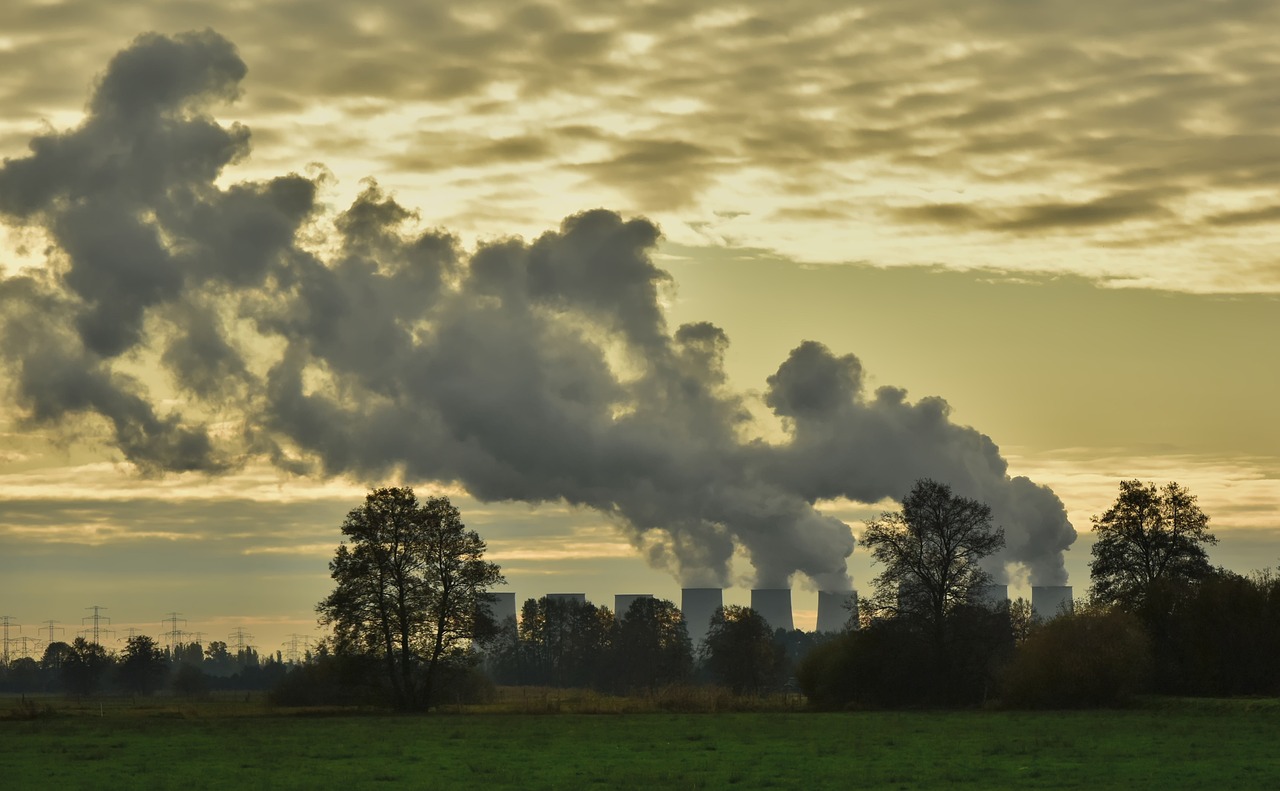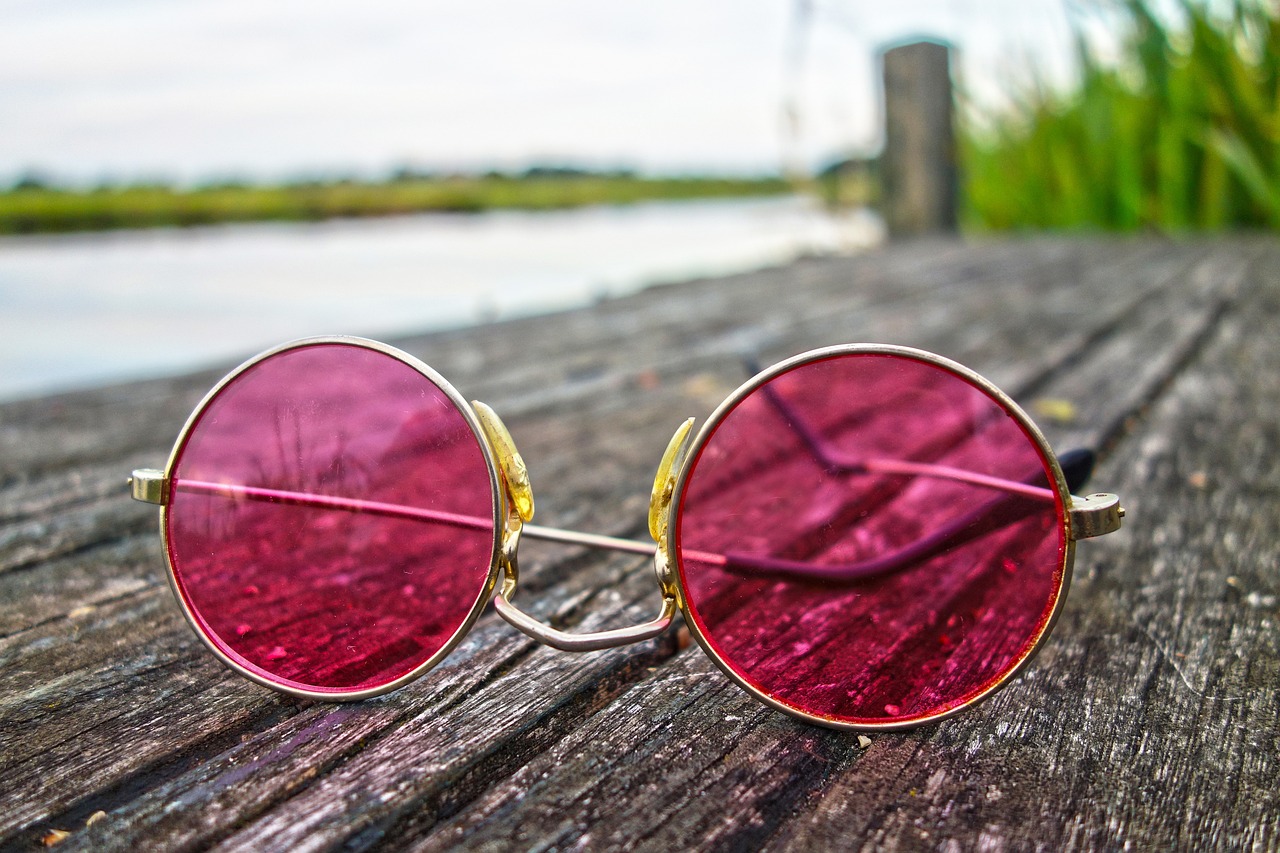From Fashion Runways to Forest Run-off: The Hidden Cost of Fast Fashion on Biodiversity
Fast fashion is a term that has become all too familiar in our modern world, but what does it really mean for our planet? As we rush to keep up with the latest trends, we often overlook the profound environmental impact our shopping habits have on biodiversity. The fashion industry, driven by the insatiable demand for cheaper and quicker clothing, has morphed into a significant contributor to ecological degradation. In this article, we will peel back the layers of the fast fashion phenomenon and reveal the hidden costs that come with it—costs that extend far beyond our wallets.
Imagine walking through a vibrant forest, filled with the sounds of chirping birds and rustling leaves. Now, picture that same forest stripped bare, replaced by sprawling fields of cotton or synthetic fibers. This transformation is not just a figment of imagination; it is happening right now, fueled by the relentless cycle of fast fashion. Each year, millions of tons of textiles are produced, only to be discarded after a few wears. This cycle not only depletes our natural resources but also leads to severe pollution and habitat destruction.
As we delve deeper into the environmental footprint of fast fashion, we must consider the alarming statistics that illustrate its impact. According to recent studies, the fashion industry is responsible for approximately 10% of global carbon emissions and is one of the largest consumers of water, using around 79 billion cubic meters annually. This staggering amount translates to a significant burden on our ecosystems, which are already struggling to cope with climate change and habitat loss.
But what does this mean for our wildlife? The expansion of textile production often leads to the destruction of essential habitats. When forests are cleared for cotton farming or synthetic fiber production, countless species lose their homes. The delicate balance of ecosystems is disrupted, leading to a cascade of consequences that threaten biodiversity. For instance, areas that once thrived with diverse flora and fauna are now barren lands, devoid of life.
Fast fashion significantly contributes to pollution and resource depletion. This section examines how the rapid production cycles impact ecosystems and the overall environment.
As we explore the impact of fast fashion on wildlife habitats, it’s crucial to highlight the specific cases where these habitats have been compromised due to fashion industry demands. Deforestation, land use changes, and water pollution are just a few of the ways fast fashion wreaks havoc on our planet.
Deforestation is a critical issue linked to textile production. The relationship between fast fashion and the loss of forested areas essential for biodiversity cannot be overstated. When forests are cleared to make way for cotton fields or other textile crops, the consequences are dire. Not only do we lose trees that produce oxygen and sequester carbon, but we also destroy the homes of countless species.
To better understand the impact of fast fashion on biodiversity, we can look at specific case studies from around the world:
| Region | Impact | Species Affected |
|---|---|---|
| Amazon Rainforest | Deforestation for cotton production | Jaguar, Sloth, Various Birds |
| Aral Sea | Water diversion for cotton farming | Fish species, Migratory Birds |
| Indonesian Rainforests | Land clearing for palm oil and textiles | Orangutans, Tigers |
In response to habitat loss, various initiatives aim to restore affected regions. These efforts are crucial not only for the recovery of local ecosystems but also for the overall health of our planet. Projects that focus on reforestation, sustainable farming practices, and conservation education are vital in reversing the damage done by fast fashion. However, the effectiveness of these restoration efforts largely depends on the support and commitment from consumers and the fashion industry alike.
The fashion industry is notorious for its excessive water consumption and pollution. Each year, the production of textiles requires an immense amount of water, leading to the depletion of local water sources. Moreover, the runoff from dyeing and finishing processes introduces harmful chemicals into our rivers and streams, threatening aquatic ecosystems and the biodiversity they support.
Consumer choices play a critical role in shaping the fashion industry. As we become more aware of the environmental implications of our purchases, we can influence brands to adopt sustainable practices. By choosing to support companies that prioritize eco-friendly methods, we can collectively drive change and contribute to biodiversity conservation.
As consumers become more environmentally conscious, sustainable fashion is gaining traction. Brands that prioritize eco-friendly practices are emerging, showcasing how fashion can be both stylish and sustainable. These companies often focus on using organic materials, implementing ethical labor practices, and reducing waste. This shift not only helps protect our environment but also fosters a deeper connection between consumers and the products they choose.
Education is essential for promoting sustainable consumer behavior. By raising awareness about the biodiversity costs of fast fashion, we can empower individuals to make informed choices. Advocacy groups and educational campaigns play a pivotal role in this process, highlighting the importance of sustainable practices in the fashion industry. Together, we can create a ripple effect that encourages positive change and ultimately helps to preserve our planet's biodiversity.
- What is fast fashion? Fast fashion refers to the rapid production of inexpensive clothing in response to the latest trends, often leading to overconsumption and waste.
- How does fast fashion impact biodiversity? Fast fashion contributes to habitat destruction, pollution, and resource depletion, which all threaten biodiversity.
- What can consumers do to help? Consumers can support sustainable brands, reduce their clothing consumption, and advocate for eco-friendly practices in the fashion industry.
- Are there any brands that focus on sustainability? Yes, many brands are now prioritizing sustainable practices, using organic materials and ethical production methods.

The Environmental Footprint of Fast Fashion
Fast fashion has become a buzzword in the industry, but what does it really mean for our planet? The rapid production cycles that define this trend do not just deliver trendy clothes at lightning speed; they come with a hefty environmental price tag. The fashion industry is responsible for over 10% of global carbon emissions, a figure that is staggering when you consider that it surpasses the emissions produced by international flights and maritime shipping combined. Imagine the impact of millions of garments being churned out monthly, often with little regard for the resources required to produce them.
One of the most alarming aspects of fast fashion is its contribution to pollution and resource depletion. The production of textiles involves a myriad of processes, each leaving a mark on the environment. For instance, the dyeing and finishing of fabrics are notorious for their water consumption and chemical runoff. In fact, it is estimated that the industry uses around 93 billion cubic meters of water annually—enough to meet the needs of over 5 million people! This excessive water usage not only depletes local water resources but also leads to significant pollution, as untreated wastewater from factories often makes its way into rivers and oceans.
To put this into perspective, consider the following points:
- Each year, approximately 2.1 billion tons of waste is generated by the fashion industry.
- It takes about 2,700 liters of water to produce a single cotton t-shirt, which is enough for one person to drink for over two years.
- Fast fashion brands often rely on synthetic fibers like polyester, which are derived from fossil fuels and contribute to microplastic pollution in our oceans.
Moreover, the rapid turnover of clothing styles encourages a throwaway culture, where garments are discarded after just a few wears. This not only leads to overflowing landfills but also increases the demand for new resources to produce replacements. The cycle continues, creating a vicious loop of consumption and waste that is difficult to break. As consumers, we must ask ourselves: is the thrill of a new outfit worth the cost to our planet?
In conclusion, the environmental footprint of fast fashion is not just a statistic; it's a reality that impacts ecosystems, wildlife, and our very existence. The industry’s practices contribute to pollution, deplete resources, and exacerbate climate change, making it imperative for us to rethink our consumption habits. By acknowledging the hidden costs of our clothing choices, we can take steps towards a more sustainable future.

Impact on Wildlife Habitats
The fashion industry, particularly the fast fashion sector, has a profound impact on wildlife habitats around the globe. As the demand for cheap and trendy clothing skyrockets, manufacturers often resort to practices that prioritize speed and cost over environmental sustainability. This relentless pursuit of profit leads to significant habitat destruction, threatening countless species and disrupting entire ecosystems. But how does this happen? Let's delve deeper into the intricate relationship between fast fashion and wildlife habitats.
One of the most alarming consequences of fast fashion is the expansion of textile production into previously untouched natural areas. Forests, wetlands, and grasslands are often cleared to make way for cotton fields or synthetic fiber production. This land use change not only displaces wildlife but also fragments their habitats, making it increasingly difficult for species to find food, mate, and thrive. Imagine a vibrant forest filled with diverse wildlife suddenly transformed into a barren field of cotton; the loss is not just ecological but also aesthetic and cultural.
Consider the case of the Amazon rainforest, often referred to as the "lungs of the planet." The demand for cotton has led to increased deforestation in this critical area, which is home to an astonishing variety of species, many of which are found nowhere else on Earth. The loss of trees means the loss of shelter and food for countless animals, from the majestic jaguar to the colorful poison dart frog. Furthermore, the soil erosion that follows deforestation can lead to a cascade of environmental issues, including decreased water quality and increased carbon emissions.
Deforestation is not just a buzzword; it is a reality that is happening right now, fueled by the fast fashion industry's insatiable appetite for raw materials. When forests are cleared, the delicate balance of the ecosystem is disrupted. Species that rely on specific plants or trees for food and shelter face extinction. For instance, the destruction of mangrove forests for shrimp farming—often linked to the textile industry’s need for cheap labor—has devastating effects on coastal wildlife, including fish and crustaceans that are vital for both the ecosystem and local communities.
Let's take a look at some real-world examples where fast fashion has wreaked havoc on wildlife habitats:
| Region | Impact | Species Affected |
|---|---|---|
| Amazon Rainforest | Deforestation for cotton production | Jaguar, Amazon River Dolphin |
| Indonesia | Forest clearing for palm oil and textile production | Orangutan, Sumatran Tiger |
| West Africa | Land degradation due to cotton farming | Western Lowland Gorilla, African Elephants |
These examples highlight the urgent need for a shift in how we view fashion. It's not just about looking good; it's about making choices that protect our planet and its inhabitants. The ramifications of habitat destruction extend beyond the immediate loss of species; they impact local communities that depend on these ecosystems for their livelihoods. When wildlife habitats are compromised, the entire web of life is affected.
In response to the alarming rate of habitat loss, various initiatives are emerging to restore affected regions. Organizations and local communities are coming together to replant trees, rehabilitate wetlands, and create protected areas. These restoration efforts are crucial, not only for the recovery of wildlife but also for the health of our planet. However, restoration is often a long and costly process, and it requires ongoing commitment from both governments and consumers.
As consumers, we hold the power to influence change. By supporting sustainable brands and advocating for environmentally friendly practices, we can help mitigate the impact of fast fashion on wildlife habitats. It's time to take a stand and make choices that reflect our values, ensuring that future generations inherit a world where biodiversity thrives.
- How does fast fashion contribute to habitat destruction? Fast fashion drives demand for raw materials like cotton, leading to deforestation and land use changes that disrupt wildlife habitats.
- What are the long-term effects of habitat loss? Habitat loss can lead to species extinction, decreased biodiversity, and destabilized ecosystems, which ultimately affect human communities as well.
- What can consumers do to help? Consumers can support sustainable brands, reduce their clothing consumption, and advocate for policies that protect wildlife and their habitats.

Deforestation and Land Use Change
Deforestation is not just a buzzword; it's a **crisis** that is intricately linked to the fast fashion industry. As demand for cheap, trendy clothing skyrockets, so does the need for raw materials, primarily cotton and synthetic fibers. This demand leads to the clearing of vast areas of forests, which are essential for maintaining biodiversity. Imagine walking through a lush forest, teeming with life, only to find it replaced by endless fields of cotton or barren land. This transformation is not just a loss of trees; it's a **destruction of habitats** that countless species rely on for survival.
When forests are cleared, the intricate web of life that they support begins to unravel. Animals lose their homes, plants that have taken centuries to grow are destroyed, and the delicate balance of ecosystems is disrupted. For instance, the Amazon rainforest, often referred to as the "lungs of the Earth," is facing severe threats due to agricultural expansion for textile production. This region is home to an astounding variety of species, many of which are endemic, meaning they exist nowhere else on the planet. The loss of such biodiversity is not just an environmental issue; it poses a **direct threat** to our planet's health and resilience.
Moreover, the land use change associated with fast fashion doesn't stop at deforestation. Once the land is cleared, it often undergoes **intensive agricultural practices** that further degrade the soil and surrounding ecosystems. The use of pesticides and fertilizers to boost crop yields can lead to soil degradation and water pollution, which in turn affects aquatic life. For example, runoff from cotton farms can introduce harmful chemicals into nearby rivers and lakes, leading to the **decline of fish populations** and other aquatic organisms. This cycle of destruction is alarming and highlights the urgent need for sustainable practices in the fashion industry.
To truly understand the impact of fast fashion on deforestation and land use, we can look at some staggering statistics:
| Impact Area | Statistics |
|---|---|
| Forests Lost for Cotton Production | Approximately 2.4 million hectares annually |
| Species at Risk | Over 1 million species face extinction due to habitat loss |
| Water Usage for Cotton | Over 10,000 liters of water needed for 1 kg of cotton |
In conclusion, the link between fast fashion, deforestation, and land use change is clear and concerning. As consumers, we hold the power to drive change through our purchasing decisions. By choosing sustainable brands and advocating for eco-friendly practices, we can help mitigate the devastating effects of fast fashion on our forests and the biodiversity they support. It's time to recognize that every piece of clothing we buy has a story, and we must ensure that it’s one of **sustainability** and **respect for our planet**.
- What is fast fashion? Fast fashion refers to the rapid production of inexpensive clothing in response to the latest trends, often leading to significant environmental impacts.
- How does fast fashion contribute to deforestation? The demand for materials like cotton leads to the clearing of forests, which destroys wildlife habitats and contributes to biodiversity loss.
- What can consumers do to help? Consumers can choose sustainable brands, reduce their clothing consumption, and advocate for environmentally friendly practices in the fashion industry.
- Are there any successful restoration efforts? Yes, various initiatives are underway aimed at restoring affected regions, focusing on reforestation and sustainable land management practices.

Case Studies of Affected Regions
When we talk about the devastating effects of fast fashion, it's crucial to look at specific regions where the impact is glaringly evident. One such region is the Amazon rainforest, often referred to as the "lungs of the Earth." Due to the insatiable demand for cotton and other raw materials, vast swathes of this biodiverse area have been cleared. This not only threatens countless species but also disrupts the delicate balance of the ecosystem. The loss of trees leads to increased carbon emissions, further exacerbating climate change, which ironically, the fashion industry often claims to combat.
Another stark example is the Aral Sea in Central Asia. Once one of the largest lakes in the world, it has shrunk dramatically because of the cotton industry’s water consumption. The diversion of rivers for irrigation has led to a catastrophic decline in fish populations, affecting local communities that relied on fishing for their livelihoods. The resulting dust storms from the exposed lakebed now carry toxins, impacting human health and further degrading local biodiversity.
In addition to these regions, the Mekong River Delta in Vietnam faces severe challenges due to the fashion industry’s demand for textiles. The intensive farming practices required for cotton cultivation have led to soil degradation and increased pesticide runoff, which poisons local waterways. Aquatic life is suffering, and the communities that depend on these resources are finding it increasingly difficult to sustain their way of life.
To better understand the extent of these issues, let's take a look at a comparative table summarizing some affected regions and the specific impacts:
| Region | Impact | Consequences |
|---|---|---|
| Amazon Rainforest | Deforestation for cotton production | Loss of biodiversity, increased carbon emissions |
| Aral Sea | Water diversion for irrigation | Decline in fish populations, health issues from dust storms |
| Mekong River Delta | Soil degradation from intensive farming | Pesticide runoff poisoning waterways, community displacement |
These case studies highlight the urgent need for change. As the fashion industry continues to grow, the pressure on these regions intensifies, leading to irreversible damage. The stories of the Amazon, Aral Sea, and Mekong River Delta serve as poignant reminders of the hidden costs of our clothing choices. It's essential for consumers to recognize that the clothes we wear are not just products; they carry the weight of environmental consequences that can resonate across the globe.
- What is fast fashion? Fast fashion refers to the rapid production and consumption of inexpensive clothing, designed to capture current fashion trends. This model prioritizes speed and cost over sustainability.
- How does fast fashion impact biodiversity? Fast fashion contributes to habitat destruction, pollution, and resource depletion, all of which threaten various species and ecosystems.
- What can consumers do to support sustainable fashion? Consumers can choose to buy from eco-friendly brands, support second-hand shopping, and educate themselves and others about the impacts of their purchases.
- Are there any organizations working to combat the effects of fast fashion? Yes, various NGOs and advocacy groups are focused on promoting sustainable practices within the fashion industry and restoring affected ecosystems.

Restoration Efforts
The devastating impact of fast fashion on biodiversity has sparked a wave of across the globe. These initiatives aim to heal the wounds inflicted on our ecosystems by the relentless demand for cheap, trendy clothing. But what does restoration really mean in this context? It’s not just about planting trees or cleaning up polluted rivers; it’s about reviving entire ecosystems and ensuring that wildlife can thrive once again. Let’s dive into some of the most notable efforts and their effectiveness.
One of the most significant restoration projects is the reforestation of areas that have suffered from deforestation due to textile production. For instance, organizations like One Tree Planted and the Eden Reforestation Projects are working tirelessly to restore forests that have been lost. They focus on planting native species that support local wildlife, creating a balanced ecosystem. The impact of these efforts can be profound, as even a small forest can serve as a sanctuary for various species, helping to maintain biodiversity.
Additionally, some fashion brands are stepping up to contribute to these restoration efforts. Companies like Patagonia and Reformation have committed to donating a portion of their profits to environmental causes, including habitat restoration. This not only helps the environment but also sends a strong message to consumers about the importance of sustainability in the fashion industry. By supporting brands that prioritize ecological health, consumers can play a pivotal role in these restoration efforts.
However, it’s essential to understand that restoration is not a quick fix. It requires ongoing commitment and resources. For example, a recent study highlighted that successful restoration projects often take decades to fully realize their potential. This means that while we can see immediate benefits, the long-term health of the ecosystem depends on sustained efforts. Here’s a quick breakdown of some key elements that contribute to the success of restoration projects:
| Key Elements | Description |
|---|---|
| Community Involvement | Engaging local communities ensures that restoration efforts align with the needs and knowledge of those who live in the area. |
| Native Species Planting | Using local flora helps to restore the natural balance and supports the wildlife that depends on these plants. |
| Monitoring and Maintenance | Regular assessments and care are crucial to ensure that the newly restored areas thrive and adapt over time. |
In conclusion, while the restoration efforts are promising, they must be coupled with a significant shift in consumer behavior and industry practices to create lasting change. By understanding the interconnectedness of fast fashion and biodiversity, we can advocate for a more sustainable future. Every small step counts, whether it’s supporting eco-conscious brands or participating in local restoration projects. Together, we can turn the tide on the environmental impact of fast fashion and pave the way for a healthier planet.
- What is fast fashion? Fast fashion refers to inexpensive clothing produced rapidly by mass-market retailers in response to the latest trends.
- How does fast fashion affect biodiversity? The fast fashion industry leads to habitat destruction, pollution, and resource depletion, severely impacting biodiversity.
- What are some examples of restoration efforts? Reforestation projects, community engagement initiatives, and collaborations between brands and environmental organizations are key examples.
- How can consumers contribute to restoration efforts? By choosing sustainable brands, participating in local environmental initiatives, and spreading awareness about the impact of fast fashion.

Water Usage and Pollution
The fashion industry is often painted as a glamorous world of style and trends, but lurking beneath the surface is a harsh reality that many consumers are unaware of. One of the most alarming aspects of fast fashion is its **insatiable thirst for water**. Did you know that it takes approximately 2,700 liters of water to produce just one cotton t-shirt? That's enough water for a person to drink for two and a half years! This staggering statistic highlights the **massive water footprint** associated with clothing production, which often goes unnoticed as we fill our wardrobes with cheap, trendy items.
Water is not only consumed in vast quantities during the production process, but it is also heavily polluted. The dyeing and finishing processes of textiles often involve toxic chemicals that, when released into waterways, can have devastating effects on aquatic ecosystems. Rivers can turn a vibrant blue or an eye-popping pink, but the reality is that these colors come at a **significant cost** to local wildlife and communities. The contamination of water sources can lead to the death of fish and other aquatic organisms, disrupt entire food chains, and ultimately affect human health as well.
To put this into perspective, consider the following impacts:
- Water Scarcity: Regions that are already water-stressed often suffer even more due to the demands of textile manufacturing. This exacerbates existing issues for local populations who rely on these water sources for drinking and agriculture.
- Pollution of Water Bodies: The discharge of untreated wastewater from factories into rivers and lakes leads to a decline in water quality, making it unsafe for both wildlife and humans.
- Impact on Local Communities: Communities living near textile factories often face health issues due to contaminated water, leading to social and economic challenges.
In many cases, the fashion industry's practices have resulted in a **vicious cycle** where water is not only wasted but also polluted, leaving communities and ecosystems to bear the brunt of the consequences. The **urgent need for sustainable practices** in the fashion industry cannot be overstated. Brands must prioritize water conservation techniques, such as using recycled water, adopting eco-friendly dyes, and implementing better waste management practices.
As consumers, we also have a role to play. By choosing to support brands that are committed to **sustainable practices**, we can help drive change in the industry. Opting for clothing made from organic materials or those that utilize water-efficient processes can significantly reduce the overall impact on our precious water resources. Remember, every purchase is a vote for the kind of world we want to live in. So, the next time you're about to buy that trendy shirt, consider not just the price tag, but the hidden costs that come with it.
Q: How much water does it take to make a pair of jeans?
A: It can take about 7,500 liters of water to produce a single pair of jeans, highlighting the immense water usage in the denim production process.
Q: What can consumers do to reduce water pollution from the fashion industry?
A: Consumers can choose to buy from brands that prioritize sustainable practices, opt for second-hand clothing, and support initiatives aimed at reducing water pollution.
Q: Are there any eco-friendly alternatives to traditional textiles?
A: Yes, materials like organic cotton, hemp, and Tencel are more sustainable options that require less water and fewer chemicals in their production processes.

The Role of Consumer Behavior
Have you ever thought about how your shopping habits influence the world around you? It’s a question that many of us overlook while scrolling through our favorite online stores or browsing the racks at our local mall. The reality is that consumer behavior plays a critical role in shaping the fashion industry and its impact on biodiversity. With the rise of fast fashion, where trends change at lightning speed and clothes are produced in massive quantities, our choices have never been more significant. Every purchase we make sends a message to brands about what we value, and unfortunately, many of those messages have contributed to environmental degradation.
When we opt for cheap, trendy clothing that we might wear only a few times, we are fueling a system that prioritizes profit over planet. This not only leads to increased waste but also encourages brands to cut corners in production processes, often at the expense of the environment. To put it simply, our buying decisions can either drive the demand for sustainable practices or perpetuate harmful ones. So, how can we shift this narrative?
One of the most effective ways to advocate for change is through informed consumer choices. By choosing to support brands that prioritize sustainability, we can help create a ripple effect throughout the industry. Imagine if every shopper decided to invest in eco-friendly clothing instead of fast fashion; the impact could be monumental! Here are a few ways consumers can make a difference:
- Research Brands: Look for companies that are transparent about their production processes and environmental impact.
- Invest in Quality: Choose high-quality garments that last longer, reducing the need for frequent replacements.
- Embrace Second-Hand Shopping: Thrift stores and online resale platforms are great for finding unique pieces while minimizing waste.
But it’s not just about individual choices; collective action can amplify our impact. As more consumers demand sustainable practices, brands will have no choice but to adapt. This shift is already happening, with many companies recognizing the need to be more environmentally responsible. However, it’s crucial that we continue to hold them accountable. After all, if we want to protect our planet and its biodiversity, we need to be vocal about our expectations.
Education plays a vital role in transforming consumer behavior. Many people are unaware of the consequences of fast fashion on biodiversity and the environment. By spreading awareness through social media, community events, and educational programs, we can empower others to make informed choices. Imagine a world where consumers are not just passive buyers but active participants in the fight for sustainability!
In conclusion, the role of consumer behavior in the fashion industry cannot be overstated. Our choices have the power to drive change, influence brand practices, and ultimately protect our planet's biodiversity. So next time you’re about to make a purchase, ask yourself: is this item worth the impact it has on our environment? Together, we can create a more sustainable future for fashion and the world at large.
Q: How does fast fashion affect biodiversity?
A: Fast fashion leads to habitat destruction, pollution, and resource depletion, all of which threaten biodiversity.
Q: What can I do to support sustainable fashion?
A: You can research brands, invest in quality clothing, and embrace second-hand shopping to support sustainable practices.
Q: Why is consumer education important?
A: Education raises awareness about the environmental impacts of fast fashion, empowering consumers to make informed choices.

Shifts Toward Sustainable Fashion
As the world becomes more aware of the environmental crisis we face, the fashion industry is undergoing a significant transformation. Consumers are increasingly recognizing the hidden costs of fast fashion, and this awareness is driving a shift toward sustainable practices. But what does this mean for the fashion landscape? Well, it’s like turning a massive ship in a narrow canal; it takes time, but the direction is changing. Many consumers are now opting for brands that prioritize sustainability, which is a game-changer for biodiversity.
One of the most exciting aspects of this shift is the rise of eco-friendly brands that are not just about making a profit but also about making a difference. These brands are committed to using organic materials, reducing waste, and implementing ethical labor practices. For instance, companies are now focusing on using recycled fabrics, which not only reduces the demand for new resources but also helps in minimizing landfill waste. Imagine a world where your clothes are made from recycled plastic bottles; it’s not just a dream anymore, it’s becoming a reality!
Moreover, many brands are embracing transparency in their supply chains. They are openly sharing where their materials come from and how their products are made. This kind of transparency builds trust with consumers who want to know the story behind their clothes. It’s like knowing the chef behind your favorite dish; it adds a personal touch and makes you appreciate the meal even more. Consumers are now asking questions like, "Where was this shirt made?" or "What materials were used?" This shift in questioning is crucial for promoting sustainable practices.
Additionally, the concept of slow fashion is gaining traction. This movement encourages consumers to buy less but invest in higher-quality items that last longer. It’s about quality over quantity—a philosophy that resonates with many who are tired of the disposable nature of fast fashion. By choosing to buy fewer, more durable pieces, consumers can significantly reduce their impact on the environment. Think of it as building a wardrobe that’s like a fine wine; it gets better with age, rather than something that’s consumed and tossed aside.
Furthermore, collaborations between brands and environmental organizations are becoming more common. These partnerships aim to raise awareness about the impact of fashion on biodiversity and promote sustainable practices. For example, some brands are pledging a portion of their profits to conservation efforts, directly linking their success to the health of our planet. It’s a win-win situation—brands gain loyal customers, and the environment gets a much-needed boost.
In conclusion, the shift toward sustainable fashion is not just a trend; it’s a movement that has the potential to reshape the entire industry. As consumers continue to demand change, brands are responding by adopting more sustainable practices. This transformation is essential for protecting our planet and its biodiversity. Remember, every time you choose to support a sustainable brand, you’re not just making a purchase; you’re making a statement. And together, we can create a fashion industry that respects our planet and its precious ecosystems.
- What is sustainable fashion? Sustainable fashion refers to clothing that is designed, manufactured, distributed, and used in ways that are environmentally friendly and socially responsible.
- How can I identify sustainable brands? Look for brands that use organic materials, practice ethical labor, and are transparent about their supply chains.
- What is slow fashion? Slow fashion is a movement that emphasizes quality over quantity, encouraging consumers to buy fewer, high-quality clothing items that last longer.
- Why is transparency important in fashion? Transparency helps consumers make informed choices about the products they buy, ensuring that they support brands that align with their values.

Advocacy and Education
In a world where fast fashion reigns supreme, the need for advocacy and education has never been more crucial. Consumers often find themselves caught in the whirlwind of trends, purchasing clothing at an alarming rate without considering the environmental consequences. This is where advocacy steps in, aiming to illuminate the hidden costs of our fashion choices. By raising awareness about how fast fashion impacts biodiversity, advocates can inspire change among consumers and the industry alike.
Education plays a pivotal role in this process. When people understand the environmental footprint of their clothing, they become more empowered to make informed decisions. Imagine walking into a store and being able to visualize the entire life cycle of a garment—from the resources used to create it to the pollution it generates. This knowledge can transform shopping habits and lead to a more sustainable approach to fashion. Schools, community organizations, and online platforms are increasingly stepping up to provide resources that educate individuals about the importance of sustainable practices.
Moreover, advocacy groups are working tirelessly to push for policy changes that promote sustainability in the fashion industry. They are lobbying for regulations that hold companies accountable for their environmental impact and urging brands to adopt transparent practices. This includes everything from using sustainable materials to ensuring fair labor practices. When consumers demand accountability, brands are more likely to respond positively. It’s a ripple effect: the more we speak up, the more change we can create.
To further enhance our understanding, consider how advocacy and education can be integrated into our daily lives. For instance, attending workshops, participating in community clean-ups, or even following eco-conscious influencers on social media can provide valuable insights into sustainable fashion. Additionally, educational campaigns can highlight the importance of upcycling and recycling clothing, which not only reduces waste but also promotes creativity in fashion choices.
Ultimately, the journey towards sustainable fashion is a collective effort. By combining advocacy with education, we can cultivate a culture that values biodiversity and environmental health. The fashion industry is at a crossroads, and with the right information and a passionate community, we can steer it towards a more sustainable future. Are you ready to be part of this change?
- What is fast fashion? Fast fashion refers to the rapid production of inexpensive clothing, designed to capture current fashion trends. This often leads to significant environmental harm.
- How does fast fashion impact biodiversity? The fast fashion industry contributes to habitat destruction, pollution, and resource depletion, all of which threaten wildlife and ecosystems.
- What can consumers do to promote sustainable fashion? Consumers can advocate for sustainable practices by choosing eco-friendly brands, reducing consumption, and educating themselves and others about the impacts of fast fashion.
- Are there any successful examples of sustainable fashion brands? Yes, brands like Patagonia, Reformation, and Eileen Fisher prioritize sustainable materials and ethical labor practices, setting a standard for the industry.
Frequently Asked Questions
- What is fast fashion?
Fast fashion refers to the rapid production of inexpensive clothing to meet the latest trends. This model encourages consumers to buy more often, leading to excessive waste and environmental harm.
- How does fast fashion impact biodiversity?
The fast fashion industry contributes to biodiversity loss through habitat destruction, pollution, and resource depletion. The demand for cheap materials often leads to deforestation and the degradation of ecosystems crucial for wildlife.
- What are the environmental consequences of fast fashion?
Fast fashion results in significant pollution, high water usage, and the depletion of natural resources. These practices not only harm the environment but also threaten the delicate balance of ecosystems that support diverse species.
- Can consumer behavior influence the fashion industry?
Absolutely! Consumers have the power to drive change by choosing sustainable brands and advocating for eco-friendly practices. Increased awareness can push companies to adopt more responsible production methods.
- What are some examples of sustainable fashion brands?
Brands like Patagonia, Reformation, and Everlane prioritize eco-friendly materials and ethical production practices. They aim to reduce their environmental footprint while promoting sustainability in the fashion industry.
- How can I make more sustainable fashion choices?
To make sustainable fashion choices, consider buying second-hand clothing, supporting ethical brands, and practicing mindful consumption. Also, consider repairing or upcycling old clothes instead of discarding them.
- What are restoration efforts in response to habitat loss?
Restoration efforts involve initiatives aimed at rehabilitating damaged ecosystems. These can include reforestation projects, wetland restoration, and community-led conservation programs designed to support biodiversity.
- Why is education important in promoting sustainable fashion?
Education raises awareness about the environmental impact of fast fashion, helping consumers make informed choices. Advocacy and educational programs can motivate individuals to support sustainable practices and protect biodiversity.


















